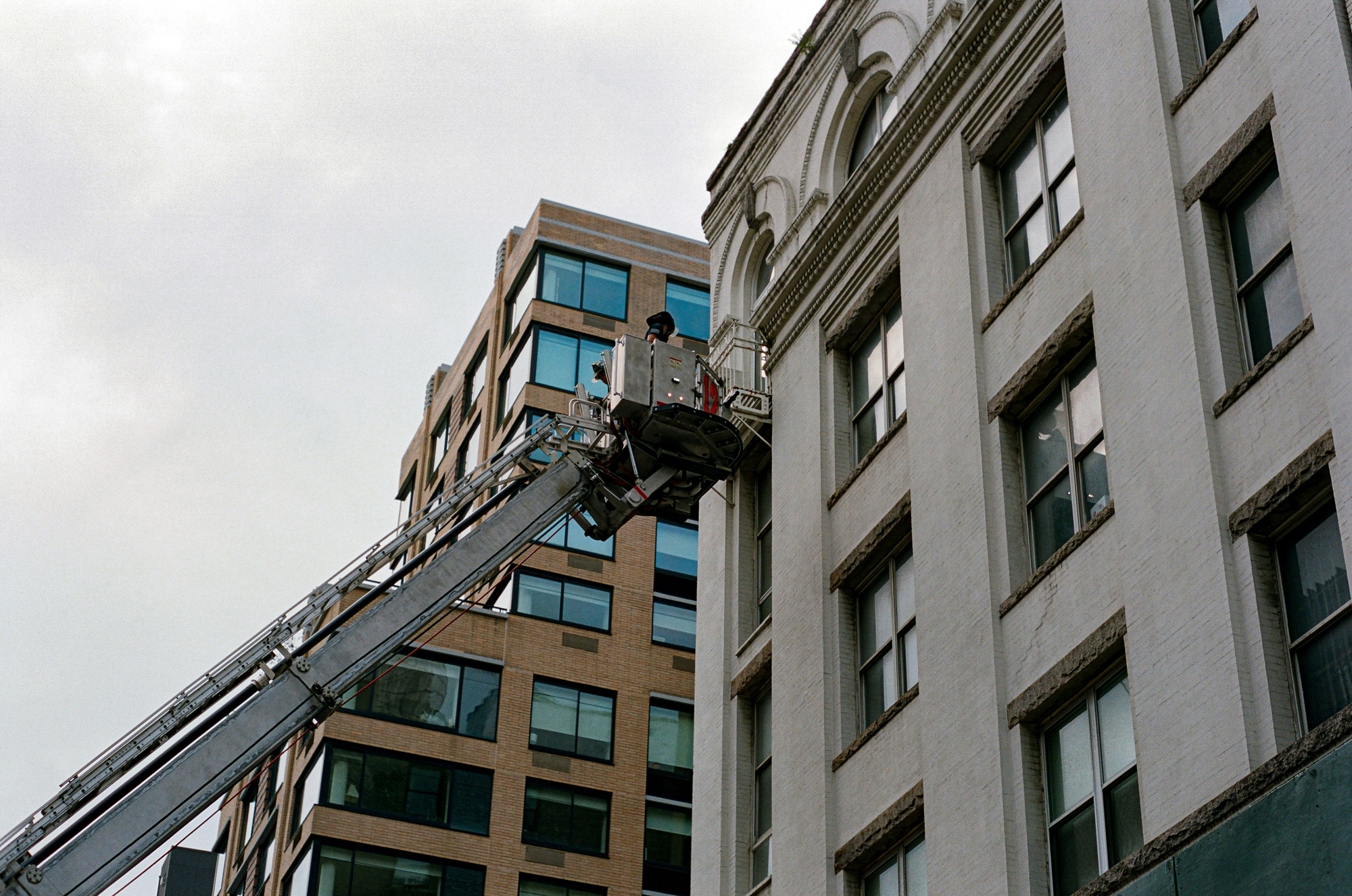Looking to reach for the skies on your next job? You need a cherry picker or a scissor lift. These bits of plant are designed to elevate workers safely and securely, allowing them to work on spots typically hard to reach, without the panic of balancing on a ladder. They’re ideal for a wide range of industries and projects, extending far beyond construction in their usefulness.
In this post, we’re going to talk all things cherry pickers and scissor lifts. Up, up and away…
What is a cherry picker?
A cherry picker, also known as a boom lift, is a piece of machinery that elevates a worker or workers off the ground to reach high places. The arm extension on a cherry picker can not only go up, but also outwards, making it a really handy bit of kit for those hard to reach spots.
They’re the perfect plant for if you can’t have the main body of the machine directly below the work that needs to be done. Activities like fruit picking, tree surgery, building maintenance, servicing utility poles and lines, and filming in the entertainment industry truly showcase the boom lift at its best.
You might be wondering, ‘Why are cherry pickers called cherry pickers?’. Well, as you’ve probably guessed, it’s because they were originally invented to help workers pick cherries. A man named Jay Eitel invented the cherry picker back in 1944 after a long day of lugging an old ladder back and forth in the orchard he worked in. He’d had enough, so he spent his free time creating the world’s first cherry picker. Thanks, Jay!
What is a scissor lift?
Like cherry pickers, scissor lifts help workers operate up high. Unlike cherry pickers, a scissor lift can only go up and down. Before you go feeling sorry for it, a scissor lift is the best option if you need a simple, sturdy up-and-down machine. They’re also typically capable of holding more weight and more workers, so it’s worth bearing that in mind when deciding between the two.
Scissor lifts are named for their mechanism, which looks like the crossed legs of a pair of scissors. The criss-crossed beams open and close like scissors, enabling the platform to lift and lower.
Scissor lifts are popular with decorators and renovators, especially in rooms and buildings with high ceilings, as well as being ideal for building maintenance, warehouse work, and window cleaning.
The difference between cherry pickers and scissor lifts
Cherry pickers reach up and out, scissor lifts reach up. It’s really that simple when it comes down to how they operate. They both come in a range of sizes and carrying capabilities, and both make excellent additions to construction sites, warehouses, and anything else that requires a bit of a lift.
What is a tracked access platform?
Also known as spiders, tracked access platforms are cherry pickers and scissor lifts on tracks instead of wheels. This makes them more suited to difficult terrains thanks to their manoeuvrability. They also feature outriggers, which are stabilising legs to keep the machine in place and prevent tipping while in operation.
Can anyone use a cherry picker or scissor lift?
To operate boom and scissor lifts, you need the 3A and 3B certifications from IPAF (International Powered Access Federation). For spider platforms, you need the IPAF 1A and 1B certifications.
These qualifications train users on how to safely operate cherry pickers, scissor lifts, and tracked access platforms, how to test and inspect the machinery, employer and employee legal responsibilities, and much more. Without these certifications, you cannot operate a lift.
Do you need a harness in a scissor lift or cherry picker?
Harnesses are not legally required equipment in powered access lifts, but they are strongly recommended, so most workers use them for peace of mind, regardless. No one wants to fall from any height, so a harness is a great safety backup and is heavily encouraged.
The harness’s lanyard that links the worker and the platform frame needs to be short enough that they won’t fall out if the lift malfunctions, hits a bump while moving, or if the worker reaches a little too far to be safe. It’s really not worth the damage a fall like that could cause, so ensure you or your workers are safely secured when in a lift. For the ultimate in safety, consider an IPAF harness awareness and user training course.
What is the wind limit for scissor lifts?
Wondering how windy is too windy for a scissor lift or cherry picker? If wind speeds are 28mph or above, get down! ISO standards require operators to halt use of access platforms while wind speeds are 28mph or more, as the machines can become dangerous when elevated at this wind level.
Do you need a license for a scissor lift or cherry picker?
A driver’s license isn’t required for scissor lifts or cherry pickers, but you will need the relevant IPAF certificate, which allows you to drive the machinery.
Cherry picker hire at Rockthorn
For boom lift hire and scissor lift hire, you’re at the right place. We’re the plant hire experts here at Rockthorn, equipped and ready to get you all the lifts you need, from 8 metre electric scissor lifts to 40 metre articulated boom lifts and beyond. Need an operator? We can get those, too, fully trained and qualified when necessary to get the plant purring.
We’re here to help with hiring out all the machinery, operators, welfare units, generators, and lighting you need, and if you need something not listed on our site, we’ll get that for you too. Just give us a call on 0330 118 5030 or use our easy online enquiry form. Did you know we cover the entire UK? It doesn’t matter where you are, we’ll get you what you need, whether it’s last-minute site lighting in Leeds or an all terrain scissor lift in Surrey.
